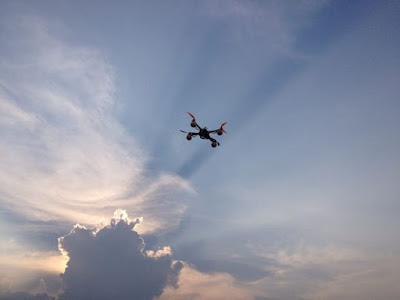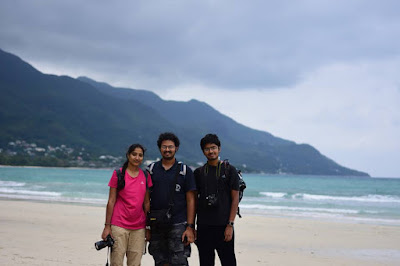 |
| The Taj Mahal, as seen from Agra fort |
The Indian subcontinent. Home to more than a sixth of humanity and the most ethnically diverse nation in existence. The only place in the world where the lion, tiger and the leopard coexist. The lands to the south of the Himalayas have always been an enigma to the ancient Greeks and Romans, who practically saw the end of the earth here. Unlike most places in the Orient, India was a focus point of world politics, then and now. Genghis Khan, Tamerlane, Emperor Augustus, Alexander the Great, Babur, Queen Victoria and Emperor Hirohito had all set their sights on India. This blog post presents the glorious history of the world's oldest civilization, based on my travels throughout the nation.
The Ancients:
 |
| The iron column from Gupta era |
The first thing that pops to general imagination of ancient India is the image of Hindu kingdoms, warring against each other. This is mostly due to the effect of the silver screen. However, this cannot be further from the truth. Ancient India was home to some of the greatest empires in history. Magadh, Guptas, Delhi Sultanate, Cholas of the south and Kushans ruled most of India in the past two thousand years. The state religion varied from Hinduism to Buddhism and Islam. Ancient India had some of the holiest sites in the world. It was home to Mahavir, the Buddha, Guru Nanak, St. Thomas and countless saints and sages throughout history. The Vedas were composed at around the same time that Sumeria was founded. At a time when the west burnt people at stake for witchcraft, surgeons in India performed delicate surgeries, and created the ancient world's greatest work on medicine, Ayurveda. Asoka's stupas challenged contemporary constructions in Rome and Alexandria in grandeur. A stark example of the metallurgical genius of the Gupta era stands in Delhi. An iron column, which hasn't rusted for over two millennia. The Gupta era saw most of the greatest Indian contributions to mathematics, science and astronomy, including the Arabic numerals and the number zero.
The emergence of Rome in the west and China in the east triggered a great civilization in India, straddling the silk route. It's founder, Kanishka I, attained immortal fame as Kanishka the Great. He is remembered as the first foreign ruler to embrace Buddhism and as one of the greatest rulers India ever had. The Hindu and Buddhist empires finally gave way to a Sultanate in Delhi, which ruled the north for more than half a millennium. At their peak, the protected India from invading Afghans and Mongols. The greatest testimonial to their genius is the tower which stood over Delhi for about 900 years. The Qutub Minar.
 |
| The Qutub Minar |
At around the same time that the north was being reformed with Islamic rulers, the south saw the beginnings of an empire. Raja Raja I created a formidable military power in the south, based at Tanjore. The Chola empire had come of age. At their peak, under Rajendra Chola, the empire stretched all the way to Vietnam and covered the present day Malaysia, Singapore and Sri Lanka. The greatest naval power in the Indian Ocean. A stark similarity with the status India holds today.
The Mughals and Hyderabad and Marathas:
 |
| Shah Jahan's Throne at Red Fort |
Babur landed in India at around the same time as the Ottomans were crushing the Byzantine empire. He had the blessings of Ottomans. Their cannon. After a swift victory over the Delhi Sultan, Ibrahim Lodi at Panipat, Babur founded the Mughal empire. Succeeding him were a line of illustrious emperors, Humayun, Akbar, Jahangir, Shah Jahan and Aurangzeb. Mughals were known for the greatest constructions India ever knew. Palaces with walls studded with precious stones. Immense irrigation projects. Tombs which surpassed the glory of most western castles. And the greatest marvel of architecture, the Taj Mahal. Mughal monuments are characterized by the keen eye given to symmetry and precision. Agra bazaar overflowed with merchants from all over the world. This time in Indian history saw the emergence of the myriad of Rajput kingdoms. Amer, Jaipur, Jodhpur, Jaisalmer, etc. The period saw the uneasy relationship between Rajputs and the Mughals. At their height, the Mughal emperors ruled a population the size of Europe under one flag. The imperial collections included the rarest of the rare artifacts. Macaws from Brazil, dodos from Madagascar, ornate stones from Belgium, weapons from the Ottomans and a host of other artefacts from the corners of the known world.
 |
| Imperial Mughal Court at Agra Fort |
 |
| The Taj Mahal - A wonder of architecture |
 |
| Fatehpur Sikri - Akbar's fabled city |
In the south, the Chola domination diminished due to weaker rulers and the erstwhile Cholan lands were conquered by emerging empires, the most famous being Vijaynagar. The Vijaynagar kingdom, founded by Harihara I operated from Karnataka and is best known for the patronage given to fine arts. In the midst of the Hindu dominated south, a new Muslim kingdom rose to power, at Golkonda. Hyderabad.
 |
| The Taj in the twilight, with river Yamuna beside it |
About four centuries ago, the city of Hyderabad was founded by Quli Qutub Shah near the oldest diamond mine in the world. He was succeeded by four other rulers in his dynasty, before being overthrown by Emperor Aurangzeb. The Qutub Shahi dynasty is entombed in the Qutub Shahi tombs in Hyderabad, near the Golkonda fort. They developed mastery over engineering and architecture and were responsible for the creation several lakes to provide for a thriving city in the midst of a barren patch of the Deccan plateau. And their mastery over acoustics is evident in the architectural wonder that's Golkonda fort.
 |
| Canons at Golkonda |
Aurangzeb installed a viceroy in Hyderabad and annexed it to the Mughal empire. The princely state of Hyderabad was created when the later viceroys declared independence from the Mughals, owing to weak emperors. The Asaf Jahi dynasty became the Nizams of Hyderabad. Hyderabad under Nizam rule was the wealthiest of Indian princely states and the most powerful. The spirit of a prolonged Islamic influence can still be seen today on every street of Hyderabad.
 |
| Emperor Humayun's sarcophagus |
 |
| Myself with Emperor Akbar's sarcophagus |
 |
| Quli Qutub Shah's sarcophagus - The founder of Hyderabad |
British Influence and Beyond:
The most recent invaders have been British. The struggle for independence has seen many a great soul being made. So valuable were India's treasures that Britain called it the crown colony and numerous British archaeologists and scientists toiled to unearth India's past. The silver lining in this dark cloud over Indian history had been the spirit of unity. Two centuries of British rule united the 500-odd Indian states into one great nation by 1947. British influence helped create the new generation of Indian scholars and scientists, who proved instrumental in the new drive to become the world's youngest super power.
 |
| Rashtrapati Bhavan - Example of colonial architecture |
The greatest legacy has been the creation of history's greatest democracy, with over a billion voters. The railway and telegraph networks that the British built helped connect the remote corners of the subcontinent in a way never imagined before. The Indian parliament, rife with corruption, is still one of the world's most powerful institutions, where representatives of a sixth of the human population debate. No wonder most of the world looks to it as a model of enlightenment.
 |
| Parliament of India |
Constant threats from its neighbours helped build the third greatest armed forces in the world. Indian Naval aviation, which began with just one seaplane in 1953, now boasts of two carrier battle groups and hundreds of aircraft. Indian diplomacy is beginning to hit foreign shores, thanks to the strong foundational work laid by leaders such as Nehru, Indira Gandhi and Vajpayee. Joint exercises with Japan, anti-piracy patrol off Yemen, oil exploration in South China Sea, busting coups in Maldives, peacekeeping in Sri Lanka. India has surely began dominating the Indian Ocean region. The significant 'Indian' touch exists here as India always strives for
peaceful resolution of disputes with its neighbours and beyond, inspite
of having an army, millions strong.
 |
| Amar Jawan Jyoti - The tomb of the unknown Indian soldier |
The opening up of the Indian economy in 1992 boosted India into the the club of the top 10 richest economies, and it now ranks 3 in GDP (PPP). Rated by the world community as an emerging superpower, India is projected to over take the US in 30 years.
 |
| Mahatma Gandhi's ashes |
 |
| The Bharat Ratna, which was awarded to Indira Gandhi |
 |
| Hussain Sagar, Hyderabad |
Nature and India:
For about 50 million years India has been surging forward into the Asian mainland, creating the Himalayas. They have inspired awe in everyone who encountered them and were the basis of all legends told in Hinduism. Together with the Himalayas, India has the world's tallest mountains, world's wettest rainforests, world's more fertile river basins, world's largest river. The Thar desert, Deccan plateau, Arabian sea, Bay of Bengal and Indian Ocean complete list of all possible habitats on earth. This has created a myriad of wildlife, most of them being endemic of India.
Everyday images in the Indian wilderness include a peacock's dance, a tiger's chase, a leopard's shadow and the elephants' trumpeting amongst a lush green jungle setting. The call of the wild had always been answered by the people of India and the beasts have made it into Indian folklore and religion, much the same way as in Egypt. But unlike Egypt, the culture survives till today.
I've had the privilege of being able to ride a bicycle through many forested areas of south India, experiencing the beauty of the land in great detail. The beauty of this land is beyond words. So, I leave the reader to infer about it from the following photographs!
 |
| Waynad, Kerala |
 |
| Somewhere in the Nilgiris, south India |
 |
| Somewhere in the Nilgiris, south India |
 |
| Somewhere in the Nilgiris, south India |
 |
| Kerala's backwaters - where lakes meet the sea |
 |
| Vivekananda Rock, off the southern tip of India |
 |
| Confluence of the Indian Ocean, Arabian Sea and the Bay of Bengal |
 |
| Cauvery Sangam |
 |
| Horsely hills, southern Andhra Pradesh |
 |
| River Godavari |
 |
| The Nilgai, somewhere in the jungles of south India |
 |
| The Bengal Tiger, India's national animal |
|
|
 |
| The Asiatic Lion at Gir, Gujarat |
 |
| King Cobra |
 |
| Leopard |
 |
| A stalking leopard |
 |
| The peafowl, India's national bird |
 |
| A Buddhist monastery in Himachal |
 |
| Parbati valley, Himachal Pradesh |
 |
| The Himalayas, the roof of the world! |
 |
| A lotus in the river Yamuna, near Mathura |









































Comments
Post a Comment